Trying to figure out how to convert slow cooker recipes to pressure cooker? Or Instant Pot? You’re not alone! With a few simple methods, you can easily convert your recipes and cook them in a fraction of the time using our favorite appliance.
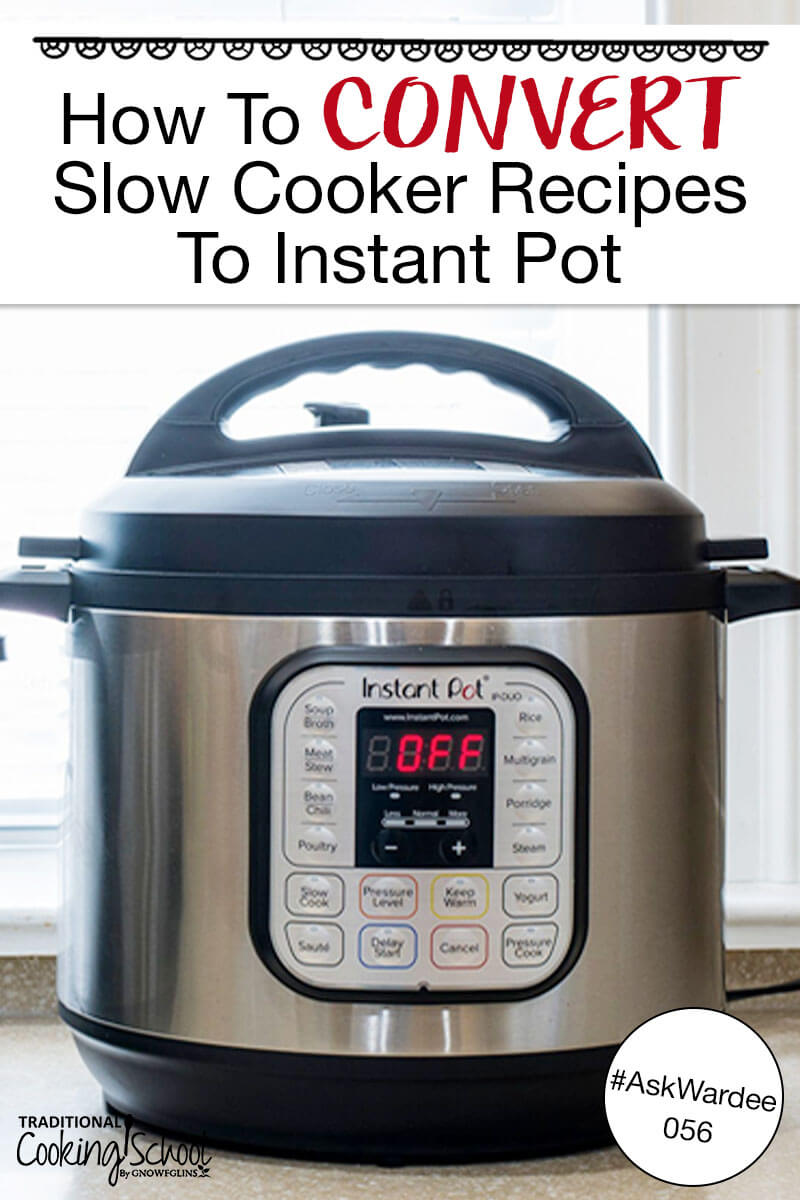
I’ve been asked many times if it’s possible to convert recipes (such as a slow cooker recipe) to make them work with the Instant Pot.
The answer is, YES! You can!
However, there are a few things you’ll need to take note of, so continue reading (or watch the video below) for all my best tips…
Table Of Contents
Can I Use An Instant Pot For Slow Cooker Recipes?
I was recently sent this message, “Hi, thanks for all your uplifting and encouraging videos. I have not been able to find if I can use slow cooker recipes and convert them to a pressure cooker. My sister-in-law gifted us a pressure cooker. Hopefully, it will help me be a better and healthier cook. 🙂 –Cherie”
While I still like making gorgeous cooked grains, soups, and broths easily in our VitaClay slow cooker, I can take my hands-free slow cooker recipes and make them even faster in a pressure cooker. (Which will still be relatively hands-free by using an electric pressure cooker like the Instant Pot.)
In today’s #AskWardee, I’m going to tell you how to do it. Just follow a few simple principles to convert your slow cooker recipes to pressure cooker (or Instant Pot) and you’ll be off to the races!
I broadcast #AskWardee live each Wednesday at 10am Pacific (1pm Eastern) on Periscope and Facebook Live. Both the podcast and video replay of this week’s show are below. Enjoy!
Subscribe to #AskWardee on iTunes, Stitcher, YouTube, or the Podcasts app.
How To Convert Slow Cooker Recipes To Pressure Cooker
You can absolutely convert your slow cooker recipes for pressure cooking. (Or electric pressure cooker such as Instant Pot.)
Let me tell you how… Keep these 9 tips in mind for easy conversion of your favorite Crock Pot recipes.
- Is the recipe a good candidate for converting?
- Know which ingredients to omit.
- Identify which ingredients need to be pressure cooked first, and what gets added later.
- Get the timing right.
- Check liquid amounts.
- Quick-release or natural release?
- Brown meat first!
- Normal operating rules apply.
- You can always use the slow-cooker function on the IP.
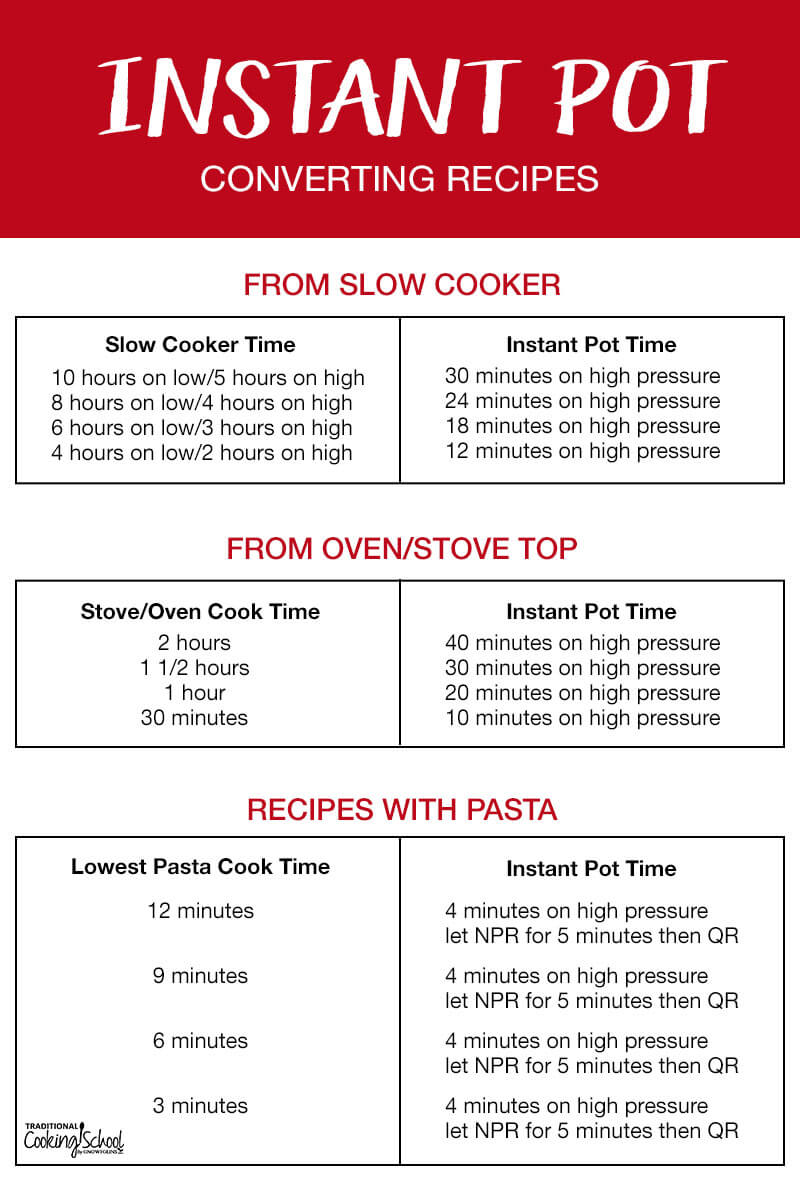
1. Is The Recipe A Good Candidate For Converting?
Some Crock Pot recipes aren’t good candidates for pressure cooking. Here are a few guidelines to help you figure out if your recipe will convert well (you can also use these guidelines when creating pressure cooker recipes).
- Has Enough Liquid — Pressure cookers require liquid to function properly. How much varies from unit to unit, though 1 to 2 cups of liquid is standard. So if your recipe already has liquid, great. If it doesn’t, make sure to add the minimum.
- Does Not Have a Fried, Crispy Coating — The pressure cooker is all about steam, not a crispy finish. However, I’ve found that crumb toppings (such as on this crisp and this sweet potato casserole) do pretty well.
- Isn’t A Super Tender Cut Of Meat — The pressure cooker is amazing for everyday cuts of meat — you know, the tougher ones. If you’ve got a succulent, expensive, tender cut of meat (like a T-Bone steak), don’t ruin it by pressure cooking it!
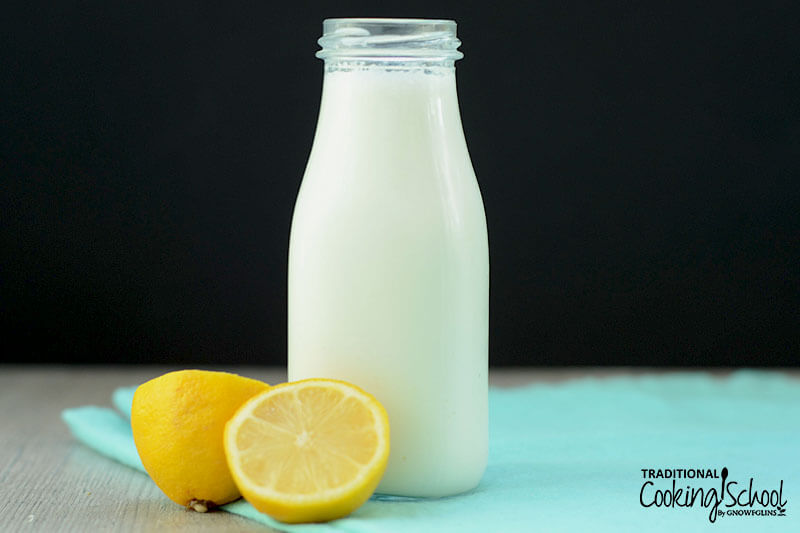
2. Omit These Ingredients
Milk (or dairy products) glob up under pressure so they’re not a good choice for cooking under pressure. (They can be added or stirred in or simmered at the end.)
Wine doesn’t evaporate under pressure, so it stays tart and raw. Again, you can add wine at the end and simmer (with the lid off and not under pressure).
Finally, thickeners, such as cornstarch or arrowroot, should not be cooked under pressure. Instead, mix them with water and whisk them in at the end with or without some heat. Often I add arrowroot at the end and the dish is still so hot there’s no need to have it on the “Sauté” function.
3. Pressure Cook The Meat/Broth/Grains/Beans First, Then Add Veggies
Your slow cooker recipe for stew may have had you combining all ingredients (meats, grains, beans, and veggies) and setting it to low for 8 hours.
That’s OK for most ingredients when converting to the pressure cooker, but I guarantee your veggies will be mush if you add them at the beginning.
Better to make that recipe in stages.
Say half hour to cook the meat/rice/beans, then release pressure, then add your veggies and cook under pressure for a few to 10 more minutes.
4. Convert The Timing
Check your manual, this online chart, or Lorna Sass’ book Pressure Perfect for timing on different food items. Go with the timing on the food that needs the longest time.
My friend Katie from Kitchen Stewardship figured out this handy rule that I find works GREAT:
If it’s a meat-based dish that can be cooked 8 hours on low or 4 hours on high in a slow cooker, it’s almost guaranteed that it will be done to perfection in 25-30 minutes in a pressure cooker (source).
If you find a huge difference in the timing required for your different ingredients, you have 2 options:
- Cut the meat into smaller pieces (they take less time to cook) so they’ll come closer to the timing on the other ingredients. This is assuming the meat requires the longest cooking time, which it usually does.
- Cook the recipe in stages. See #3 above.
5. Reduce The Liquid, Maybe
When pressure cooking, very little liquid is lost to evaporation. So in general, you should probably reduce the liquid in the original recipe to 1 to 2 cups when putting it in a pressure cooker.
Exceptions would be:
- Grains and Beans — Use the exact amount needed to fluff them up, with a bit more for the other ingredients in the recipe.
- Soup — Use the amount of liquid you actually want in the finished result.
If you’re pressure cooking a baked dish — such as a crisp, quiche, or bread — you’ll put that batter/mixture in a baking dish and put that inside your cooker on a rack. Make sure to pour the minimum amount of water (1 or 2 cups) inside the cooking unit (so it surrounds your baking dish but is not inside the dish itself).
A good cover for a baking dish is a plate or lid from a pot or a piece of parchment paper followed by foil.
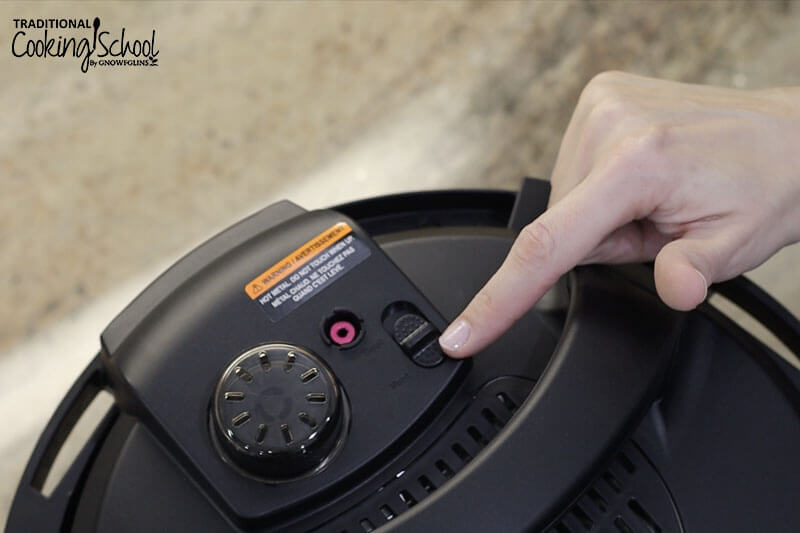
6. Quick Or Natural Release?
Meats generally do best with a natural release. I make exceptions when I’m doing a recipe in stages — like I need to add vegetables and cook more. In which case, I do a quick release, add the veggies, and add a few minutes under pressure, then quick release again.
Vegetables do best with quick-release, otherwise, they get mushy.
In my experience, rice and beans do well with either type of release.
7. Take Time To Brown
You know those slow cooker recipes that have you brown the meat on the stove-top first? Using a pressure cooker or Instant Pot is even better because you can do that in the same pot — no additional mess! And it makes a big difference in flavor.
So, put the Instant Pot on sauté. (Or put your stove-top cooker on medium to medium-high heat.) When it’s hot, add some cooking fat. Put your meat in and brown on all sides. If you have many pieces, like 8 chicken thighs, do them in stages so they’re not overcrowded.
Then proceed with the rest of the recipe, not on “Sauté” anymore but rather under pressure.
8. Normal Operating Rules Apply
It’s still important to operate your Instant Pot or pressure cooker safely.
Make sure the seal is clean and well seated. Ensure the venting knob is in the sealing position. Check that the valves are clean and the condensation cup is clean and empty.
You know what I mean about all this because I harp on it often enough. 😉
9. Or Use The Instant Pot Slow Cooker Function
Don’t forget, the Instant Pot has a slow cooker function. Get this glass lid and it’s just like your slow cooker! Sometimes, you might not want to convert a slow cooker recipe because you’re going to be out all day anyway…
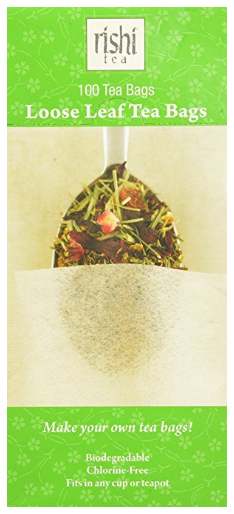
Helpful Links
- Loose leaf tea bags – These help you avoid the mess and inefficiency of a tea ball or tea strainer. Just slip your loose leaf herb mix inside and put it in your teacup. No mess at all because it’s tall enough to hold the loose herbs and still reach the top of your cup.
- Herban C Tea Mix from Bulk Herb Store – It’s so yummy and good for you. It’s my new favorite tea!
- Instant Pot
- Instant Pot Glass Lid
- Free Instant Pot Sourdough Cornbread Recipe
- Online Pressure Cooking Timing Chart
- Pressure Perfect book by Lorna Sass
- Instant Pot Apple-Cranberry Crisp Recipe
- Sweet Potato Casserole In The Instant Pot
Other Instant Pot Articles
- How To Use A Pressure Cooker 101
- How to Use Your Instant Pot (+ Easy Instant Pot Instructions)
- Which Instant Pot Should I Buy? Which Size And Model Is Best For My Family? #AskWardee 048
- Is The 8 Quart Instant Pot Ever Too Big? #AskWardee 126
- How To Clean Your Instant Pot — Naturally & Easily! #AskWardee 087
- How Do I Reheat Food In The Instant Pot? #AskWardee 047
- How To Reheat Frozen Food In The Instant Pot {Instant Pot Freezer Meals} #AskWardee 079
- 11 Surprising Things You Can Make In The Instant Pot
Have you converted any slow cooker recipes to pressure cooker? What tips would you add?
This post was originally published and written by Wardee Harmon on 1/4/17. It was updated and republished on 4/14/21.
...without giving up the foods you love or spending all day in the kitchen!
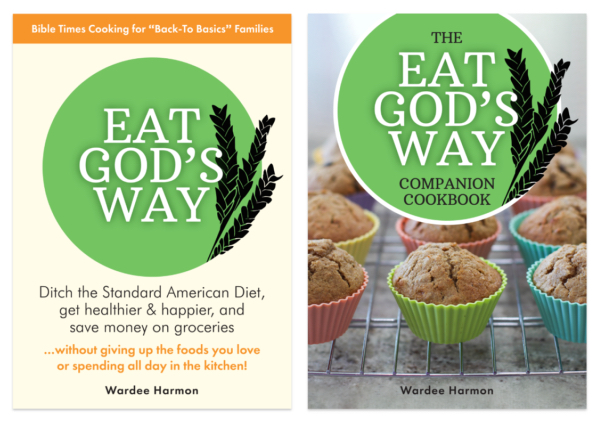
2 free books:
Eat God's Way
Ditch the Standard American Diet, get healthier & happier, and save money on groceries...
We only recommend products and services we wholeheartedly endorse. This post may contain special links through which we earn a small commission if you make a purchase (though your price is the same).

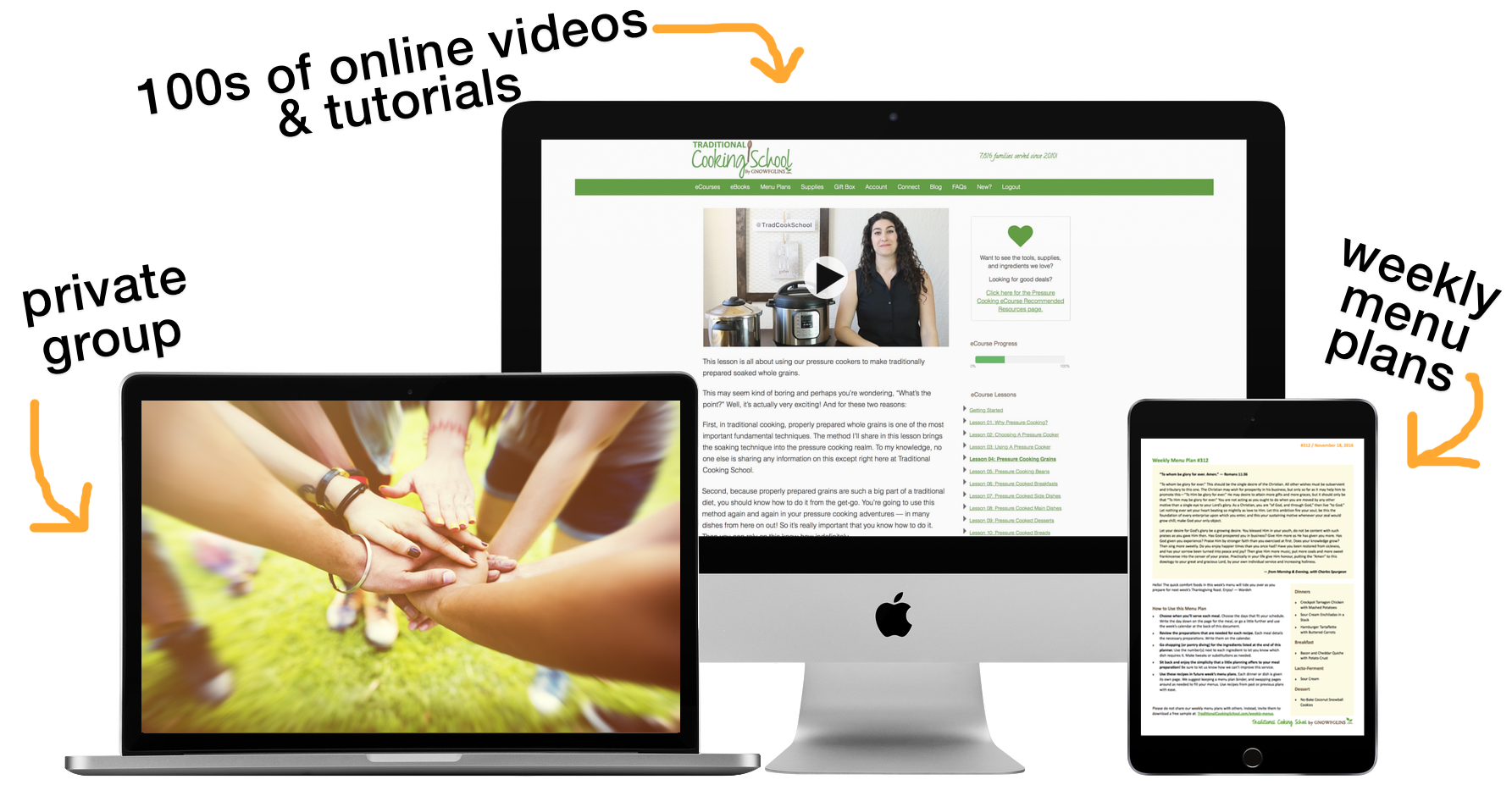
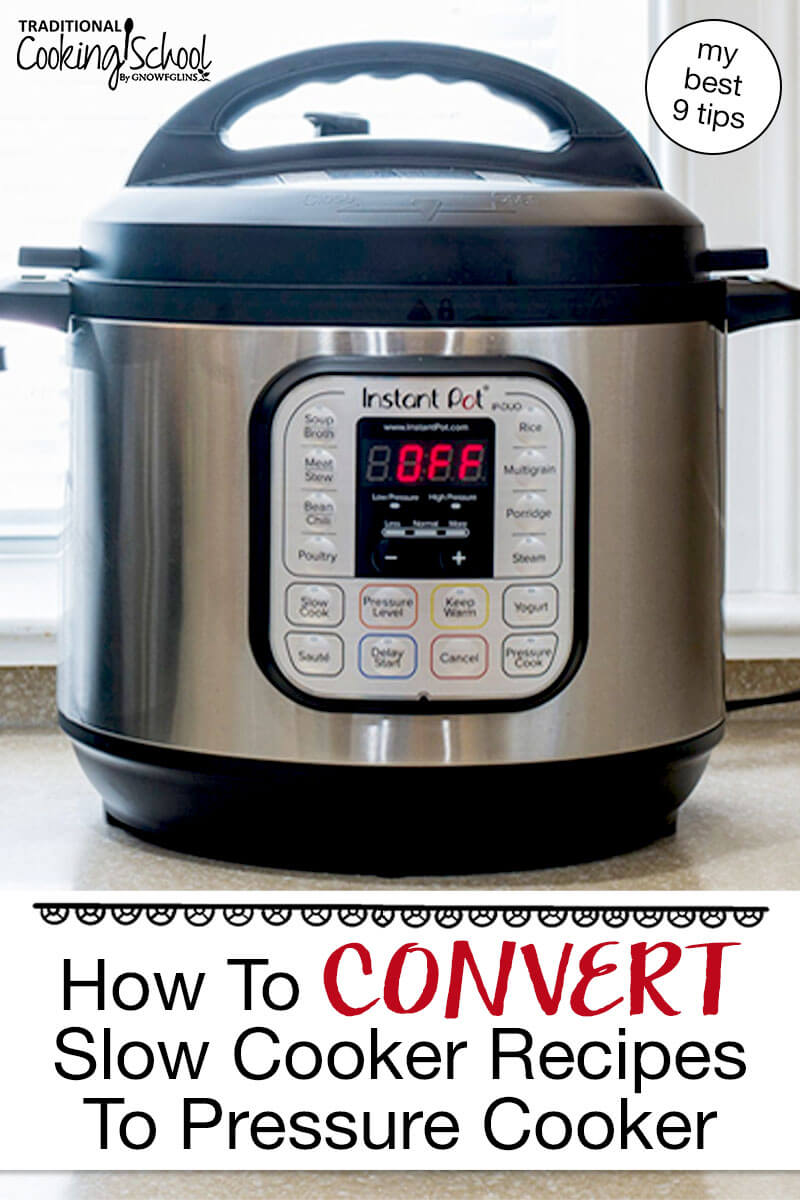
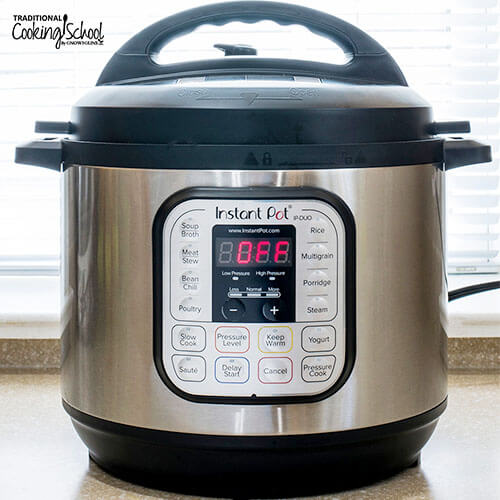
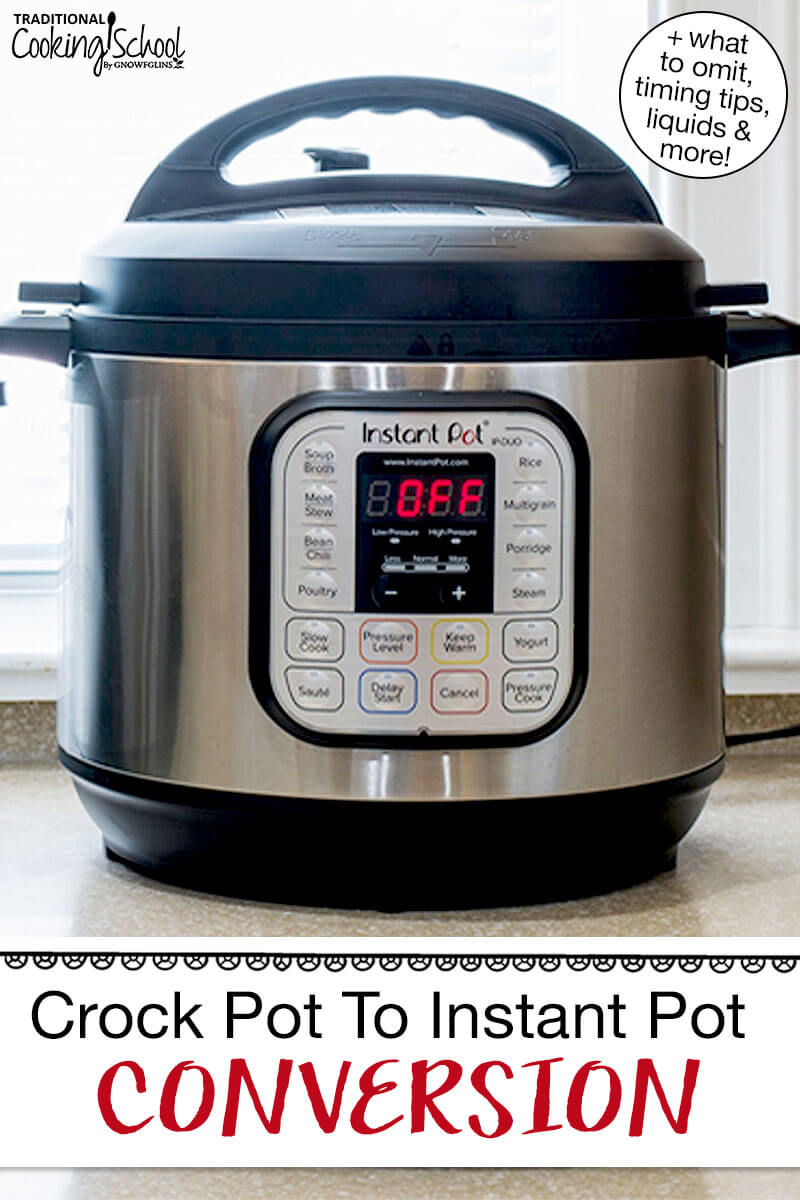
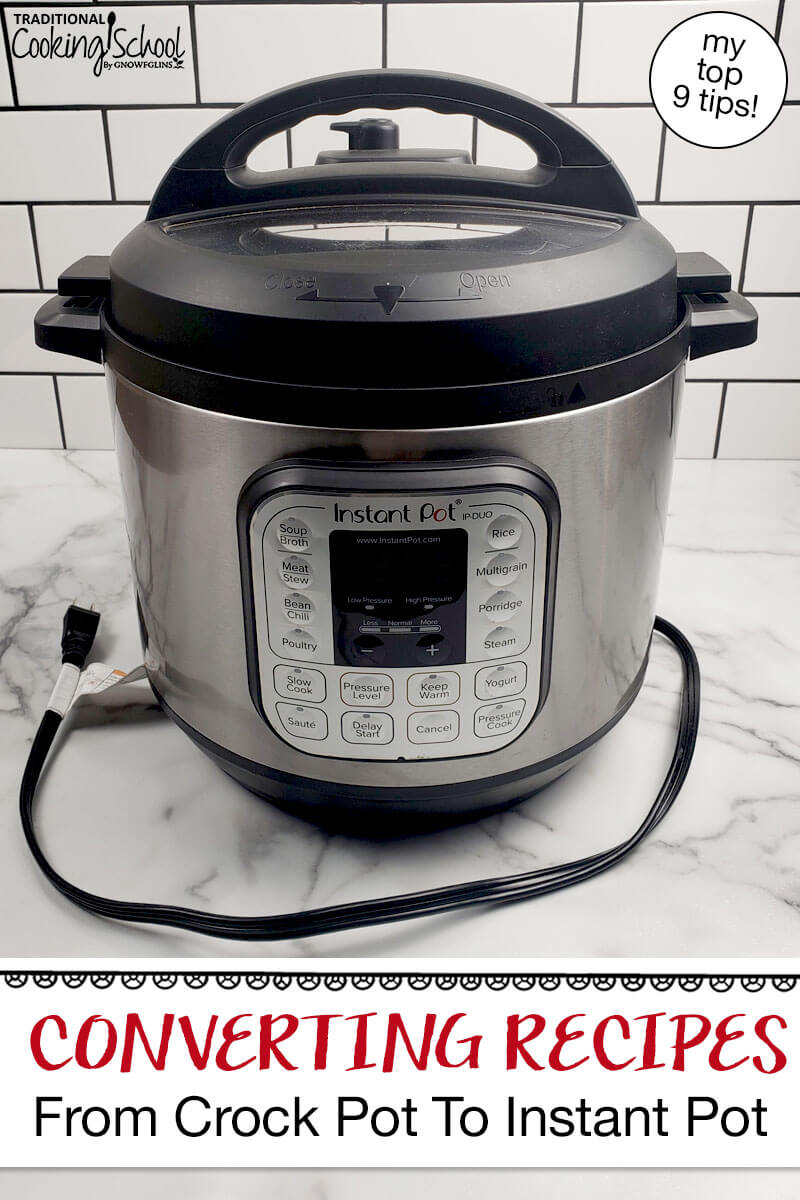
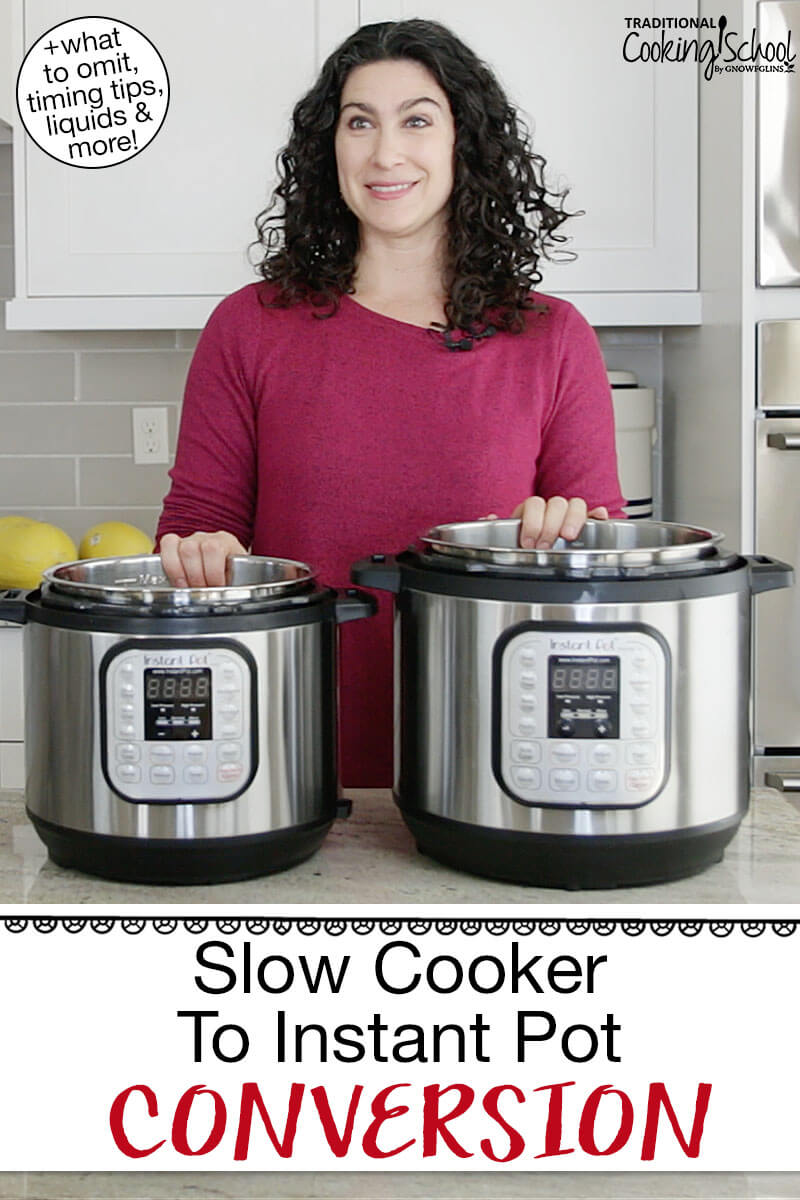
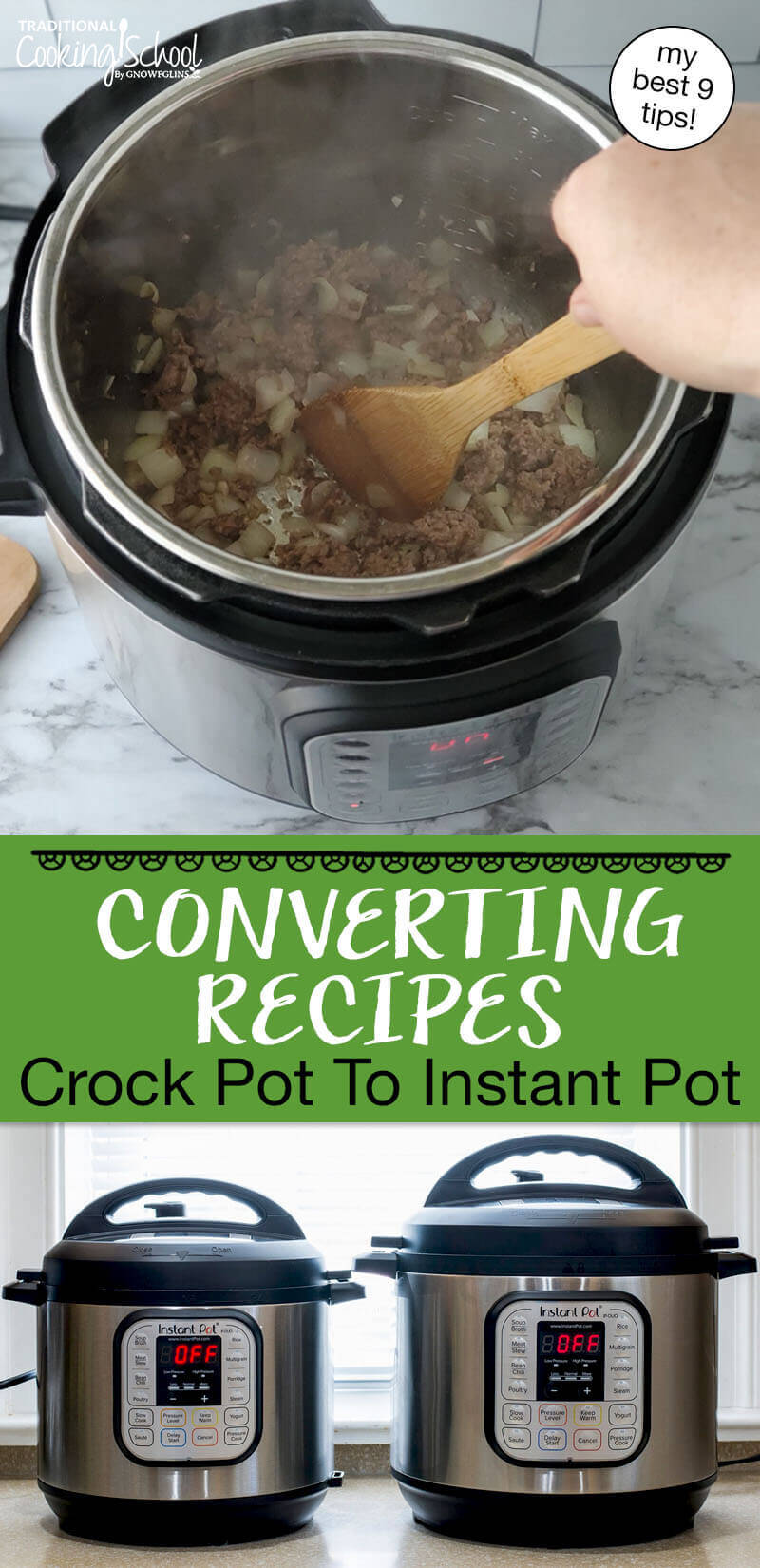
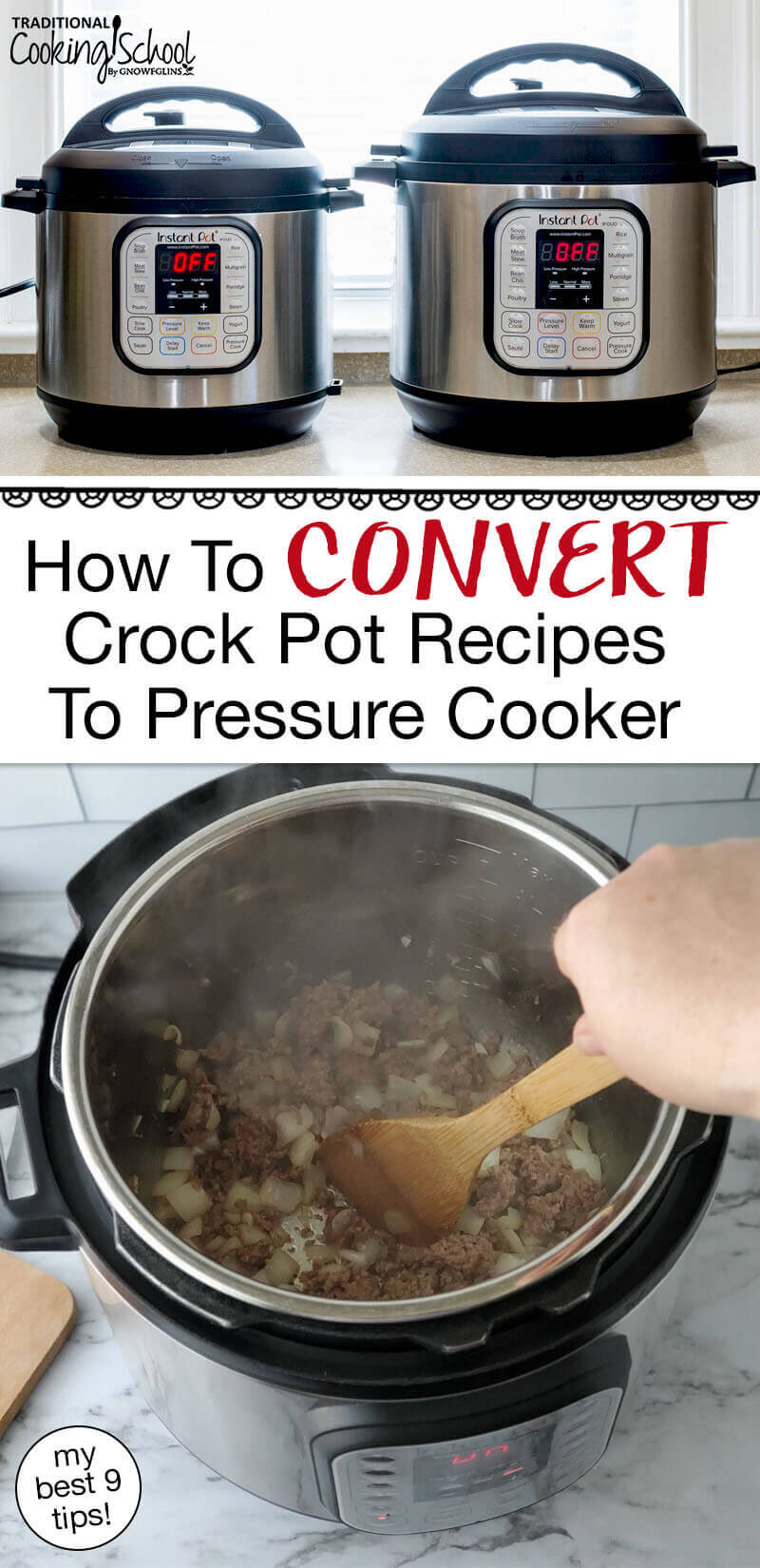
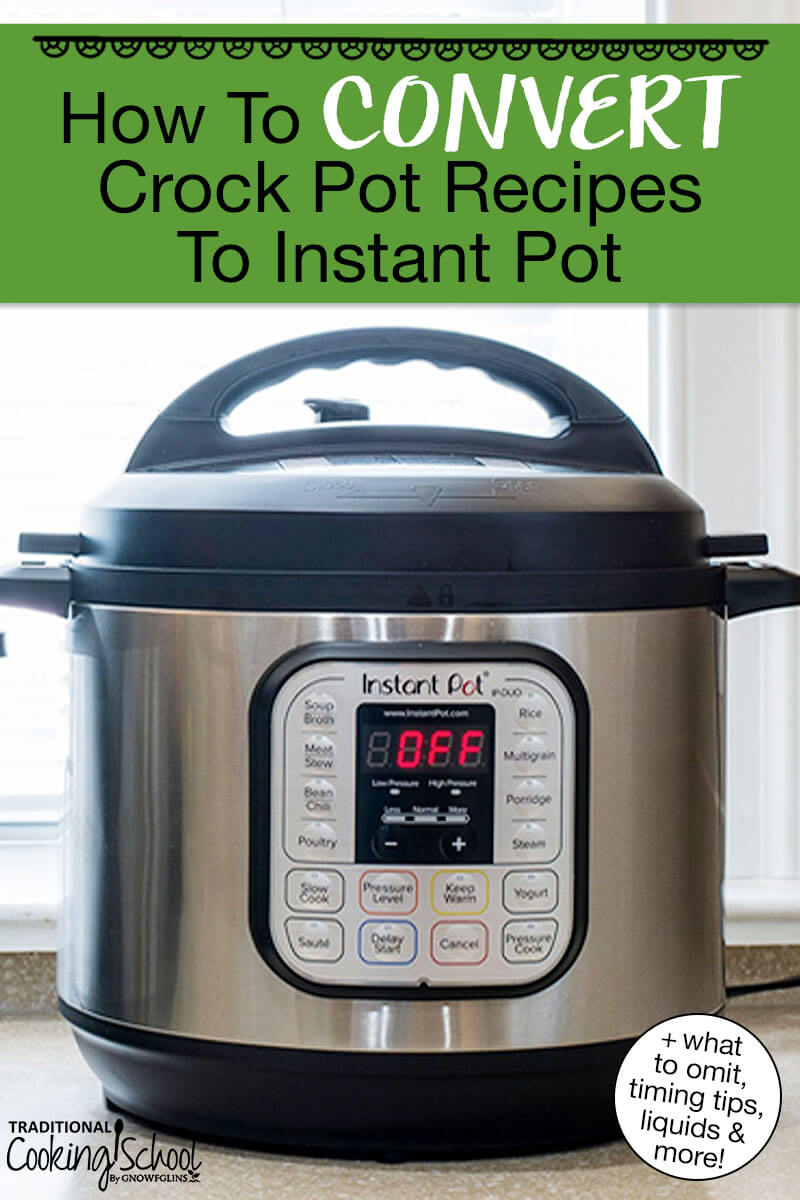
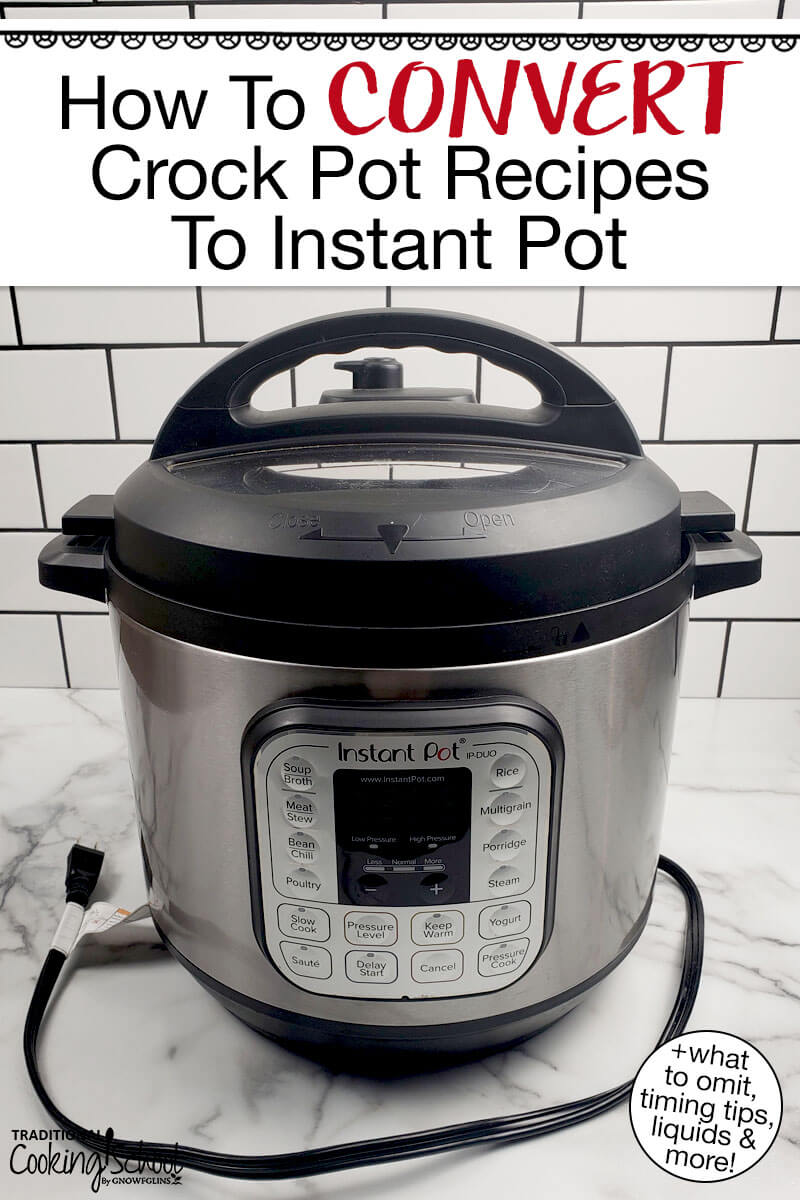
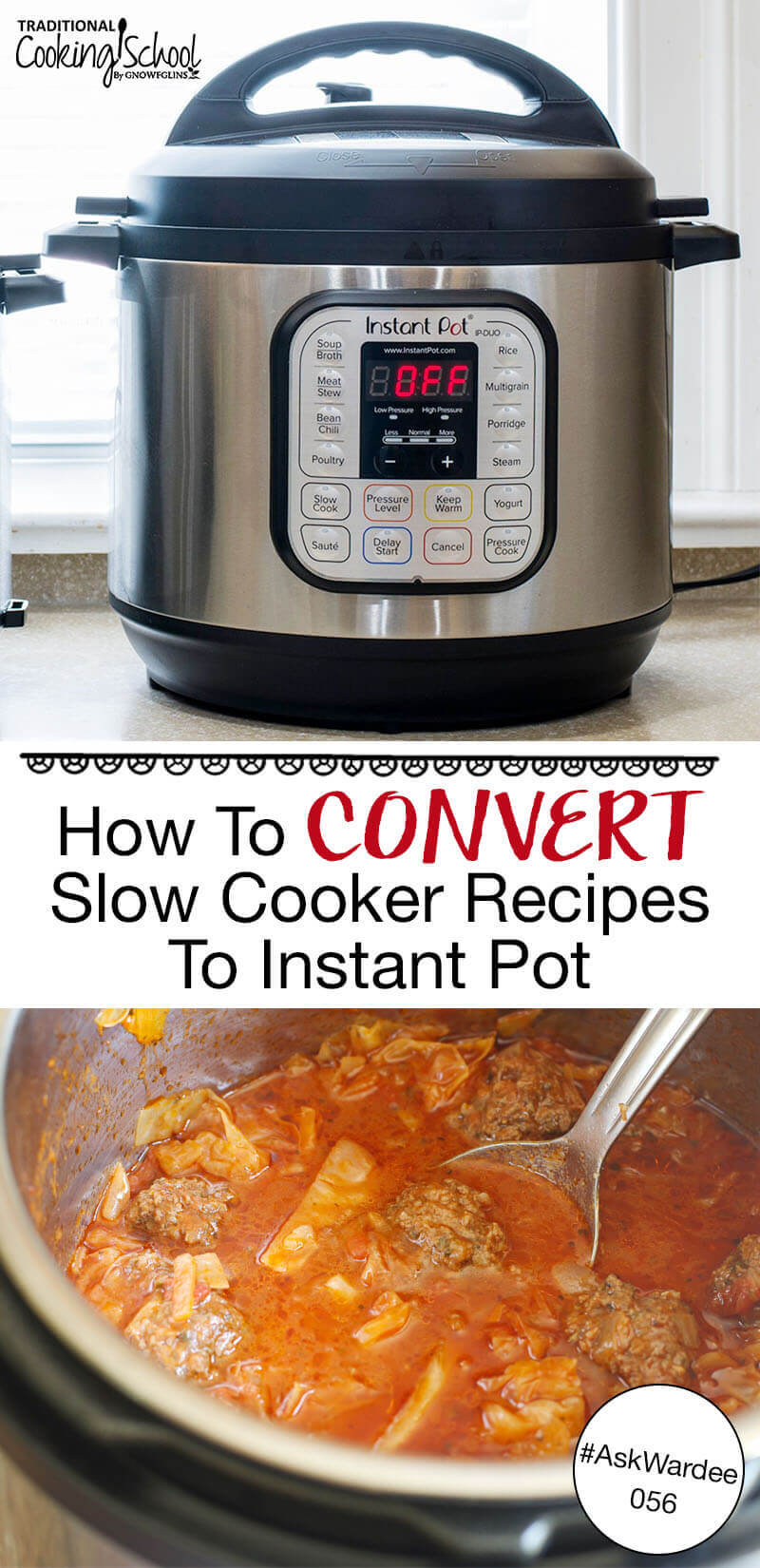
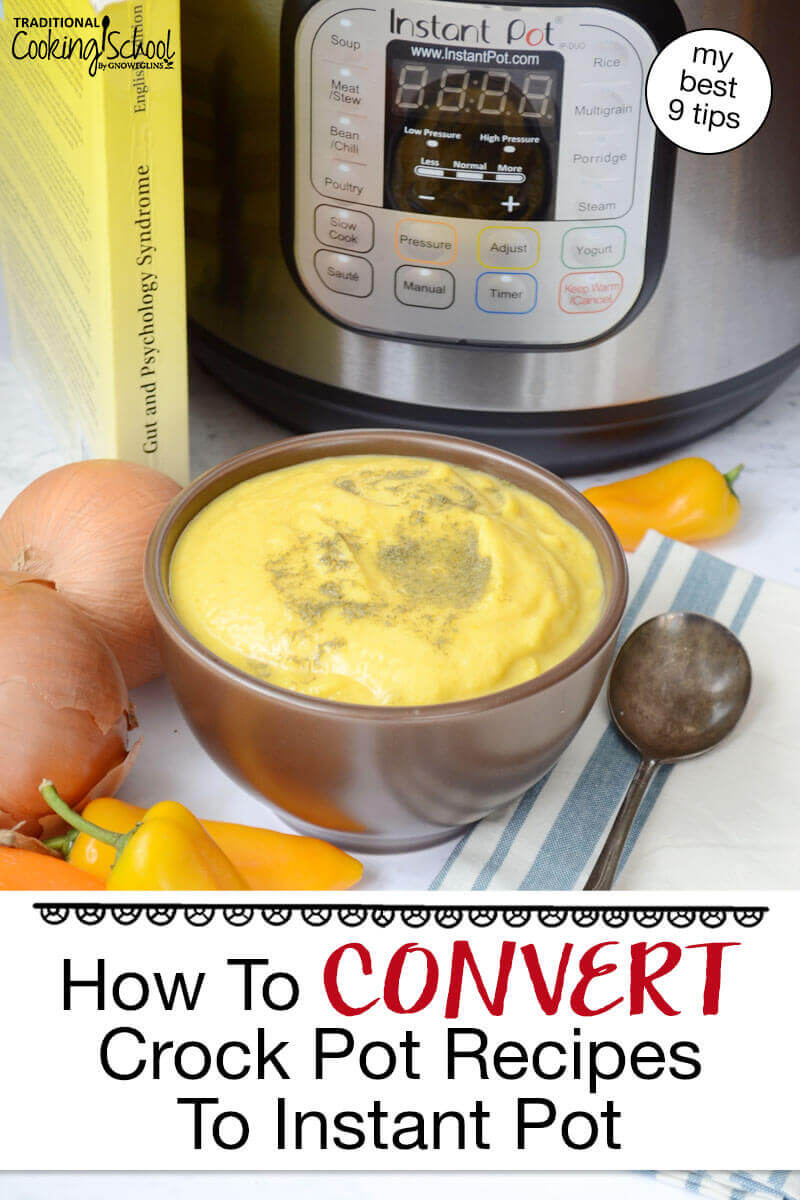
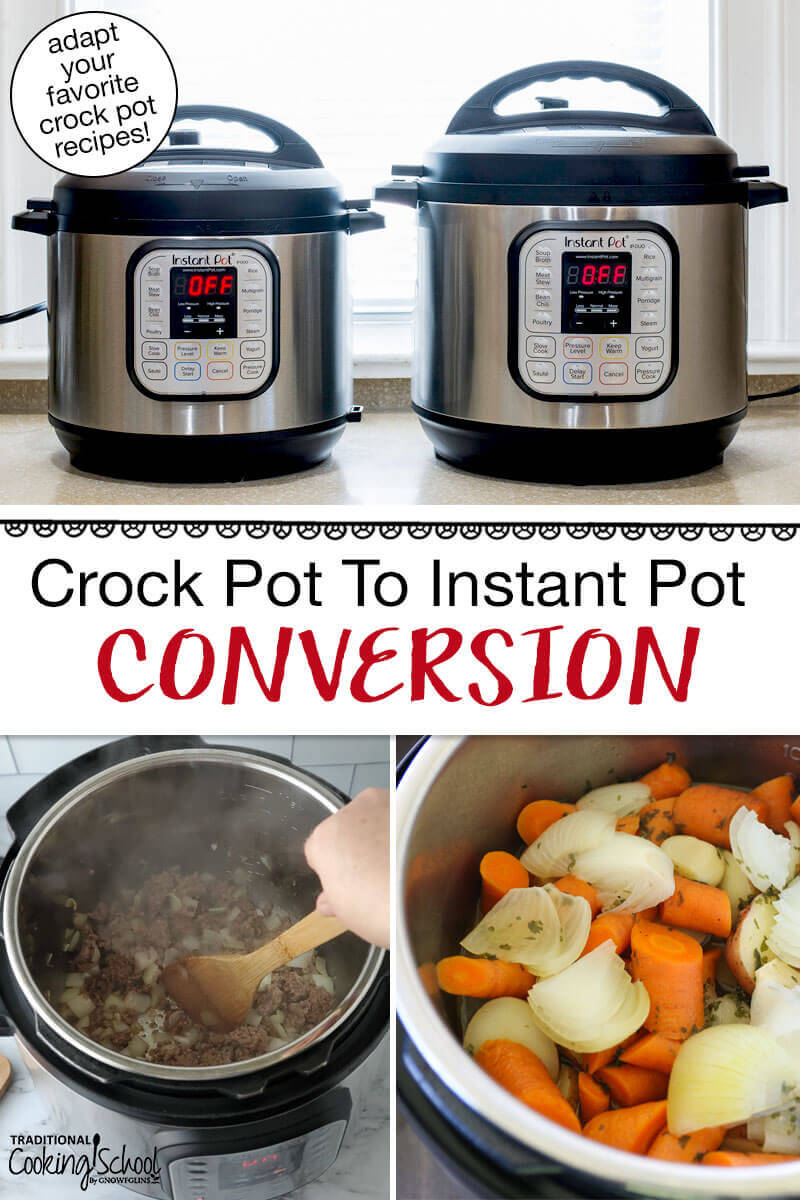
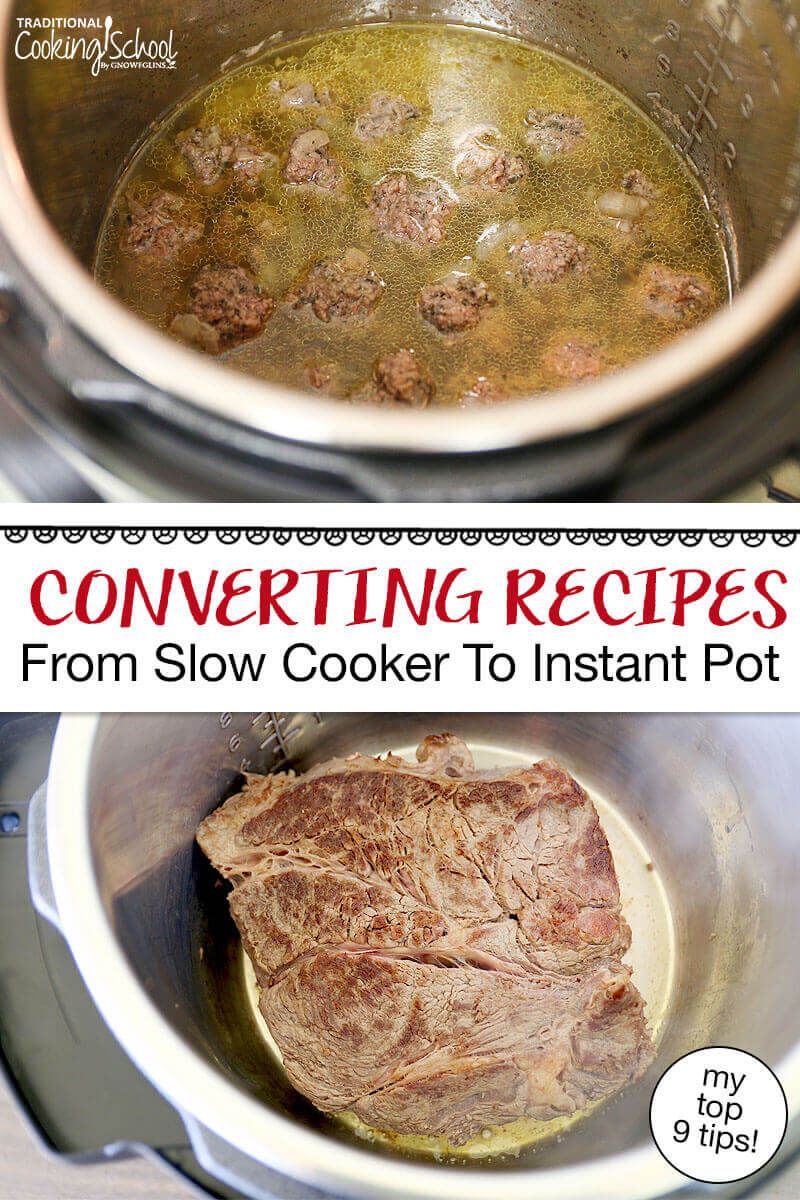
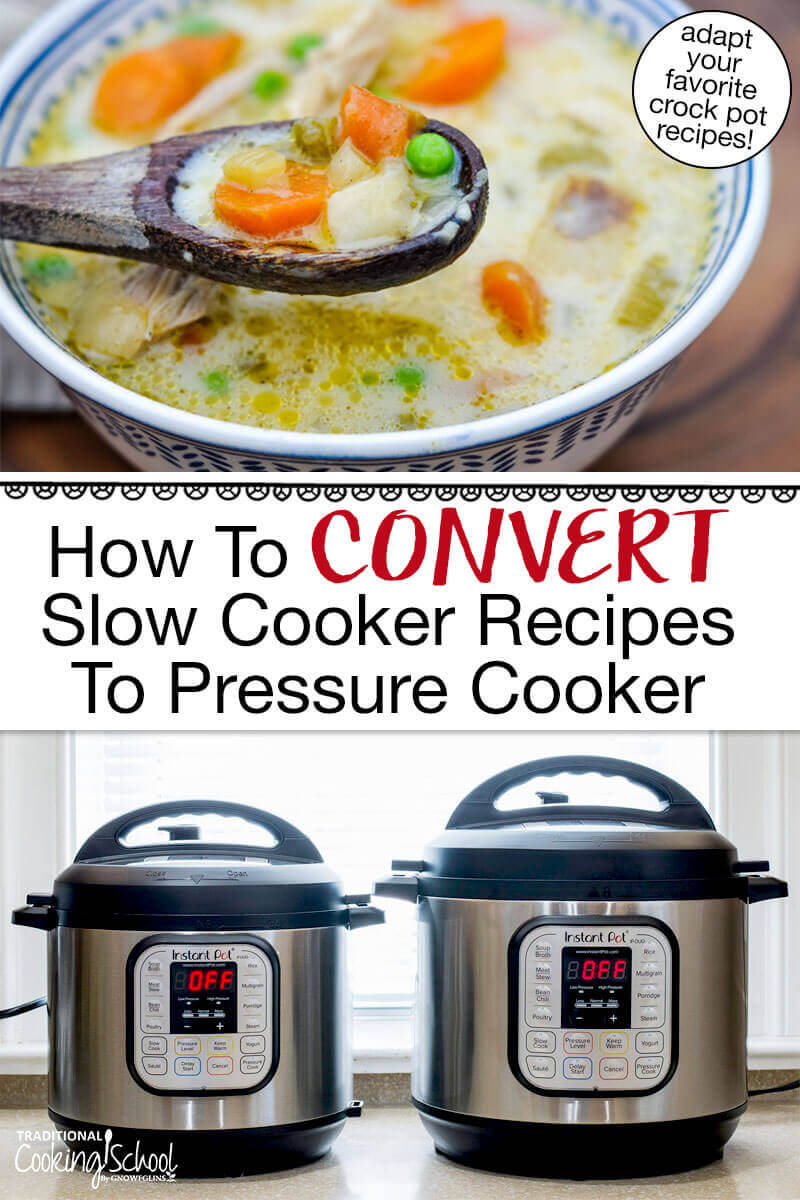
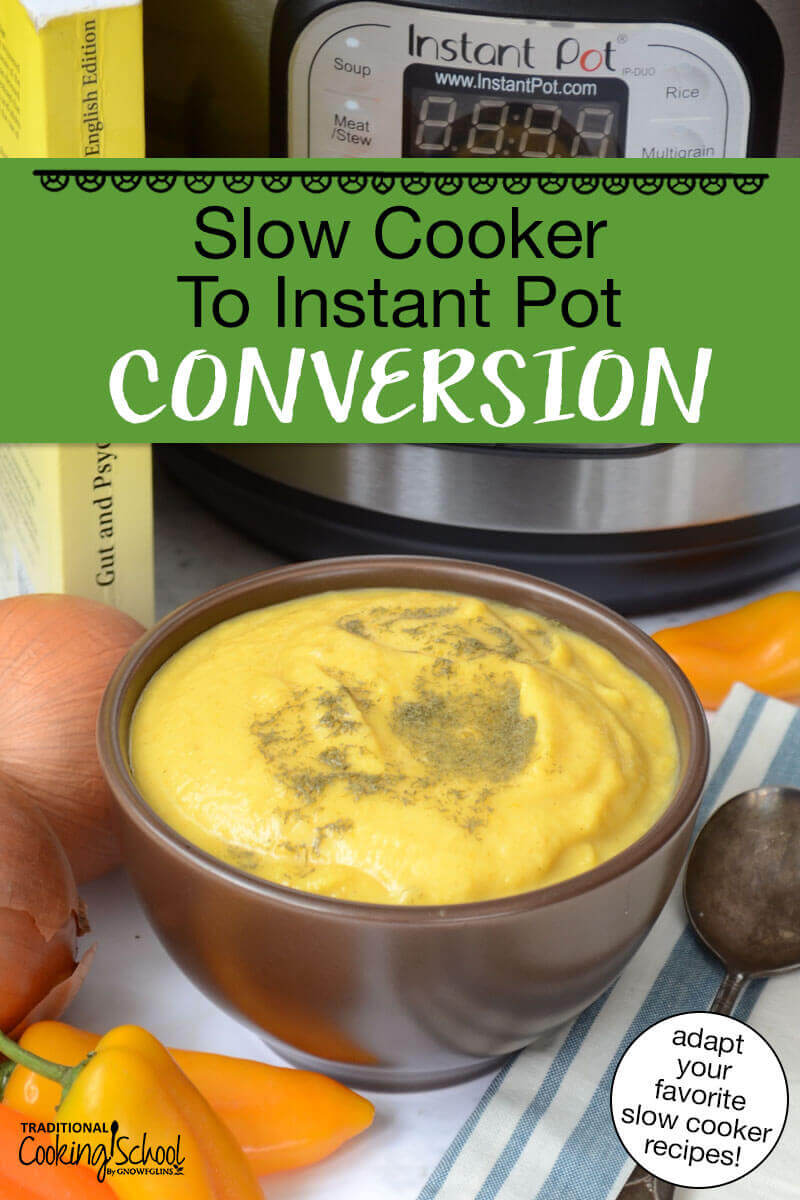
Thanks for the tip on tea bags. I’ve been using coffee filters. I put the herbs in and twist the filter around tightly then I use one of those (useless) tea ball strainers to clamp the filter so it won’t un-twist.
Love those new tea bags you have. Thank you so much for all this detailed information. I am so excited that it is doable!
Wine doesn’t evaporate under pressure, so it stays tart and raw. Again, you can add wine at the end.
such as cornstarch should not be cooked under pressure. or, mix them with water and whisk them in at the end with. Often add arrowroot at the end and the dish is super. Enjoy ……..
What do you do when your instant pot says burn? I usually open it up and stir everything and try to scrape out the bottom of the pot so nothing sticks. However it still says burn.
Hi, Kathy.
I’ve found the Burn” message can mean a few things:
1. Not enough water (be sure you’re using the minimum 1 cup of liquid)
2. The liquid is too thick (it will start to burn before it comes to a boil)
3. There’s cream/milk in the recipe (these should be added after pressure cooking)
4. The pot did not come to pressure (be sure the venting knob is in the sealing position and your seal is in tightly)
~Danielle, TCS Customer Success Team
I have a slow cooker recipe that I’d like to convert to pressure cooker, can I do that since the recipe uses cream of mushroom soup?
Hi, Estelle.
As mentioned in number 2 above, dairy (including cream) should be omitted or added at the end after pressure cooking.
~Danielle, TCS Customer Success Team
A big HELLO from Wilder, Idaho. Just found your site. Will be exploring it further. Thanks for your time and effort that you put into your website.